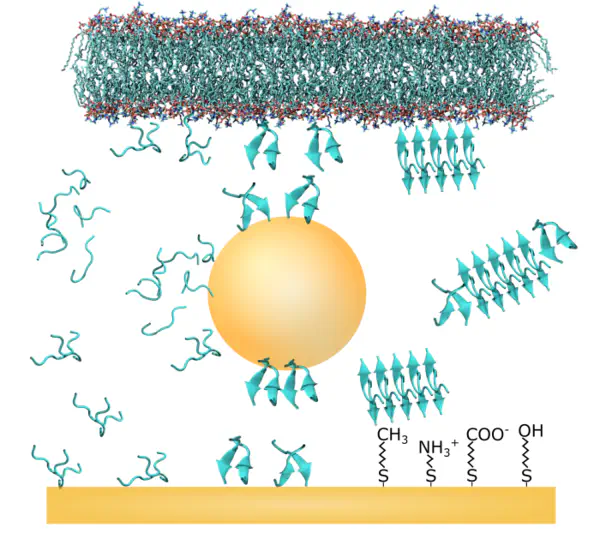Peptide Self‐Assembly into Amyloid Fibrils at Hard and Soft Interfaces – From Corona Formation to Membrane Activity
 Graphical Abstract: Wiley
Graphical Abstract: WileyAbstract
Peptides and proteins are exposed to a variety of interfaces in a physiological environment, such as cell membranes, protein nanoparticles (NPs), or viruses. These interfaces have a significant impact on the interaction, self-assembly, and aggregation mechanisms of biomolecular systems. Peptide self-assembly, particularly amyloid fibril formation, is associated with a wide range of functions; however, there is a link with neurodegenerative diseases such as Alzheimer’s disease. This review highlights how interfaces affect peptide structure and the kinetics of aggregation leading to fibril formation. In nature, many surfaces are nanostructures such as liposomes, viruses, or synthetic NPs. Once exposed to a biological medium, nanostructures are coated with a corona, which then determines their activity. Both accelerating and inhibiting effects on peptide self-assembly have been observed. When amyloid peptides adsorb to a surface, they typically concentrate locally, which promotes aggregation into insoluble fibrils. Starting from a combined experimental and theoretical approach, models that allow for a better understanding of peptide self-assembly near hard and soft matter interfaces are introduced and reviewed. Research results from recent years are presented and relationships between biological interfaces, such as membranes and viruses, and amyloid fibril formation are proposed.